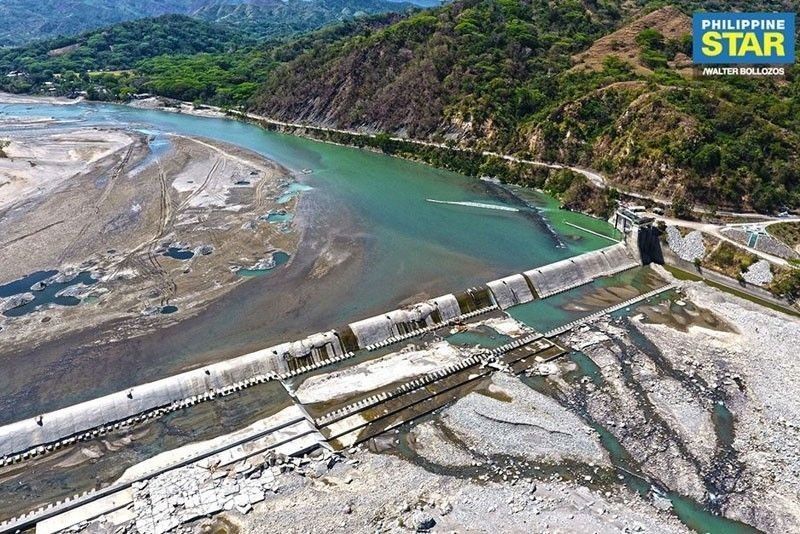Angat recovery to take 3 months

MANILA, Philippines — Despite recent heavy rains, the public must continue coping with unstable water supply as the recovery of Angat Dam, Metro Manila’s main source of water, will take three more months.
In a joint briefing yesterday, the Philippine Atmospheric, Geophysical and Astronomical Services Administration (PAGASA) said the water level in Angat Dam would normalize at 180 meters by September or October, given the rain situation over the past days.
“For it to return to normal, it would not take only one month; maybe three months or more. One factor is that Angat was really low the past months and it did not receive any rain during that period,” PAGASA weather specialist Junie Ruiz said.
“Even if there will be rains for consecutive days, it would just wet the soil in the Angat watershed. After saturating the soil, that’s the only time it would go down to the water table and eventually recharge the dam,” he added.
As of early yesterday morning, the dam’s water level further dipped to 159.09 meters, below the critical level of 160 meters.
“If there will soon be significant rainfall in a period of one or two weeks, then slowly, Angat will recharge. But the 180 meters will only be reached probably by September or October when typhoons start land crossing in Central Luzon,” Ruiz said.
The National Water Resources Board (NWRB) also warned that Angat might possibly breach the lowest water level of 157.57 meters within the week if current situation continues without significant rainfall.
It was in July 2010 when Angat Dam registered its lowest level of 157.57 meters. It was among the worst El Niño episodes in the country.
“As of now, we cannot assure when we can return supply to normal, considering the low water level in Angat. That’s why we are also trying to maintain and prepare our system so as not to have additional reduction,” NWRB executive director Sevillo David Jr. said.
Water allocation for concessionaires Maynilad Water Services Inc. and Manila Water Co. Inc. has been slashed to 36 cubic meters per second (CMS) from 40 CMS.
This is a huge cut from the average allocation of 48 CMS on normal days.
“We will look at it once Angat starts recovering and see if we can start reviewing to slowly increase the allocation again. But for now, we maintain the 36 CMS until the end of June,” David said.
“We also have to consider the future requirement for the rest of the year. The succeeding requirement this year and even for next year will rely on what level the dam will recover,” he added.
Further, allocation for the agriculture sector will resume only when Angat returns to 180 meters.
The NWRB started reducing allocation for farms in April and eventually removed it earlier this month.
“We just want to ensure that once we release for agriculture again, we will be able to sustain their requirements,” David said.
The further cut in water allocation for Metro Manila and nearby provinces has caused longer hours of interruption for more than 12 million combined consumers for the two concessionaires.
Meanwhile, the Metropolitan Waterworks and Sewerage System warned concessionaires to strictly follow their advisories and warned consumers to save up just enough supply.
“Consumers should just save enough for what they need because once they start getting more, the reservoirs might be the ones to be affected,” MWSS administrator Reynaldo Velasco said.
“We really need to manage our available resources in order to stretch the water in Angat,” he added.
Velasco said the heavy downpour over the weekend did little to help in improving water level in the dam.
Water crisis hearing
The House of Representatives oversight committee will resume today its hearing on the water crisis in Metro Manila brought about by the breaching of the critical water level of Angat Dam in Bulacan.
Outgoing Speaker Gloria Macapagal-Arroyo initiated the hearing due to the prolonged water shortage, as the creation of a Department of Water will also be included in the agenda as the committee tries to evaluate the issues for the next Congress to act upon.
She said Local Water Utilities Administration (LWUA) acting administrator Jeci Lapus was seeking government help and solution for the Angat Dam water problem as well as requesting measures to prevent a long-drawn out water crisis from happening.
Invited to the hearing are officials from the MWSS, NWRB, LWUA, National Irrigation Authority, Departments of Agriculture, Budget and Management, Environment and Natural Resources and Public Works and Highways.
Officials from the National Economic and Development Authority and water concessionaires Ayala-owned Manila Water and the Manny V. Pangilinan-owned Maynilad Water, among others, are also invited.
House Minority Leader Danilo Suarez has suggested that the stalled construction of the Sumag River Diversion project in Quezon province be resumed to help solve the water crisis in Metro Manila.
Suarez, the incoming Quezon governor, said the recurring and extended water crisis would be solved in the long term if the government pushes through with the completion of the project, whose water flows through Angat Dam in Bulacan.
Suarez said this would provide not only a remedy but give Metro Manila residents relief from the ongoing water interruptions since the start of the year.
The construction of the Sumag Diversion project, which is “70 percent complete,” was stopped in 2016 after an accident took place that claimed the lives of six workers at the construction site.
Senate President Vicente Sotto III has vowed to increase funding for long-term water security projects and proposed to the Duterte administration to support public-private partnership programs for the same, such as desalination plants.
He said the country should not suffer from dry spells if there are desalination plants, which are common in the Middle East and nearby countries like Singapore.
Sen. Grace Poe, who led the inquiry into the recent water shortage in Metro Manila as chair of the public services committee, lamented the water crisis appeared to have worsened despite assurances from the MWSS and concessionaires that they have learned their lesson from the previous supply interruptions. – With Delon Porcalla, Rhodina Villanueva, Paolo Romero
- Latest
- Trending






























